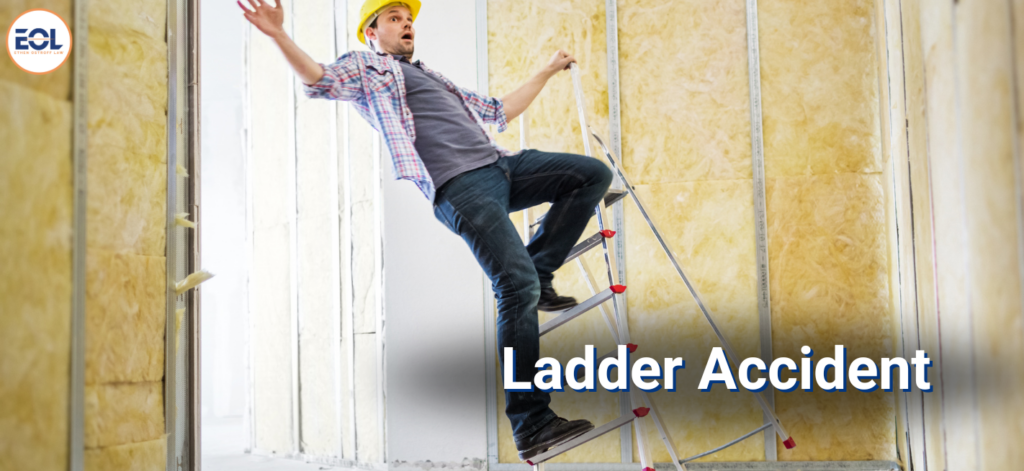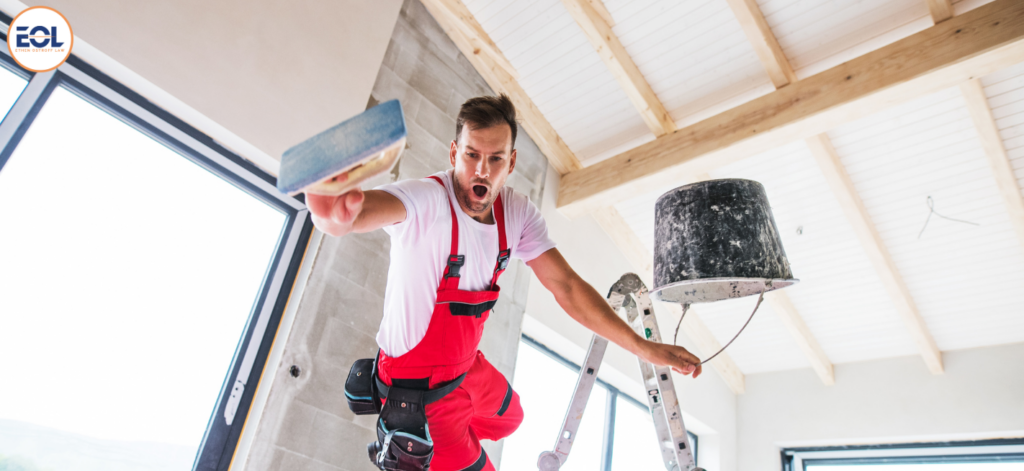Ladder Accident Lawyer - Ethen Ostroff Law
Ladders are important tools in homes across America, helping with tasks like reaching high places and home repairs. Trusted brands like Werner Co. Inc. and Louisville Ladder Inc. are usually dependable. But even these companies can make faulty ladders, leading to serious injuries. Ethen Ostroff Law understands how harmful these defects can be. We work to make sure manufacturers take responsibility for their negligence, pushing for safer products and defending the rights of those hurt by faulty ladders. In this article, we discuss the legal options for ladder accidents and the crucial role of a ladder accident lawyer in helping victims get justice and fair compensation.
The Evolution and Utility of the Ladder
Ladders have been essential tools for both residential and commercial purposes, aiding in tasks from household chores to industrial work like construction and firefighting. Dating back thousands of years, evidence of ladders’ use can be traced to ancient civilizations. Initially made from wood and rope, early ladders were used for construction, agriculture, and domestic tasks. As technology and materials advanced, so did ladder design and construction, reflecting humanity’s drive for innovation. Despite changes over time, ladders remain vital tools, symbolizing human ingenuity and resourcefulness throughout history.
Types of Ladders
There are various types of ladders designed to meet specific needs:
- Attic Ladders: Installed permanently in ceilings for accessing attic spaces, they fold down for use and up for storage.
- Extension Ladders: Adjustable in length, consisting of multiple sections that slide together for storage and extend for use, ideal for reaching high places.
- Folding Ladders: Featuring a hinged design for easy folding into a compact size, suitable for household use and DIY projects.
- Multi-Purpose Ladders: Configurable into various positions like straight, A-frame, or scaffold, adapting to different tasks and environments.
- Platform Ladders: Featuring a large platform at the top for secure standing, commonly used in commercial and industrial settings.
- Step Ladders: Self-supporting with a hinged design opening into a free-standing, triangular shape, used for tasks at lower heights.
- Straight Ladders: Consisting of a single, straight section with rungs or steps, commonly used in construction and maintenance.
- Telescoping Ladders: Featuring a nested design for collapsing into a compact size, adjustable to various heights for indoor and outdoor use.

Most Popular Ladders in the US
These popular ladders are known for their compact design, lightweight construction, and ease of use:
- Gorilla GLX-5B 5.5 ft. Aluminum Dual Platform Ladder
- Gorilla GLXF-5B 5.5 ft. Fiberglass Dual Platform Step Ladder
- Little Giant Select Step Model 5-8
- Louisville Ladder FE3228 28-Foot Fiberglass Extension Ladder Type IA
- Werner D6228-2 28ft Type IA Fiberglass D-Rung Extension Ladder
- Werner FS106 6ft Type I Fiberglass Single Sided Step Ladder
- VEVOR Telescoping Ladder, 15 FT Aluminum One-Button Retraction Collapsible Extension Ladder
The Escalating Rates of Ladder-Related Incidents
Ladder accidents are a major concern due to their high rates of injuries and fatalities. Here are some key points from the data:
- Each year, over 100 people die, and thousands are injured from ladder falls in the US.
- More than 22,000 ladder-related injuries occur annually in the US. In 2020, 161 people died from ladder falls, with about 65% of these deaths involving movable ladders. While ladder-related deaths decreased by 12% from 2016 to 2020, it underscores the importance of practicing safe ladder use.
- The CDC reports that 81% of fall injuries in the US involve ladders, costing around $24 billion annually. Over the past decade, ladder-related deaths have tripled globally, with the US leading in ladder fatalities.
Notable Ladder Recalls in the US
Ladder recalls in the US are crucial for ensuring safety when manufacturers identify potential hazards or failures in their products. Here are some notable recalls:
Werner
- Space Master Sliding Attic Ladders (Model WS2308): Werner recalled these ladders in June 1997 due to backward-installed hooks, causing random drops and injuries. The affected ladders were sold in major home improvement stores across the US between January and May 1997.
- Multi-Purpose Telescoping Aluminum Ladders: Werner issued a recall for these ladders due to fall hazards arising from structural weaknesses or faulty locks.
- Steel Easy Access Attic Ladders (Model S2208 and S2210): Werner faced a class action lawsuit over these ladders, as low-quality hinges caused collapses and injuries.
Louisville Ladder
- Fiberglass Extension Ladders (Brands: Louisville/Davidson and Michigan): Louisville Ladder recalled about 25,000 units sold between September and December 2007 due to a locking failure in the “fly” section, posing fall risks. No injuries were reported, and the remedy was a free repair kit.
- Industrial Ladders: In November 2005, Louisville Ladder issued a recall covering various models of industrial ladders sold in industrial supply and home improvement stores from November 2004 to June 2005. Approximately 3,000 units were affected due to weak spots in the rungs, putting users at risk of falling.
Other Brands: Various ladder brands beyond Werner and Louisville Ladder have also issued recalls for models with issues like missing safety features or design flaws, ensuring consumer safety.
Hazards Posed by Defective Ladders
Defective ladders can pose serious hazards, increasing the risk of accidents and injuries. Here are some common hazards:
- Faulty Locking Mechanisms: Ladders with malfunctioning locking mechanisms may collapse unexpectedly while in use.
- Improper Assembly or Installation: Using ladders incorrectly, setting them up on unstable surfaces, or overextending them beyond their recommended height can lead to accidents.
- Inadequate Footing: Ladders with worn or damaged feet may be unstable, increasing the risk of slips or falls.
- Insufficient Weight Capacity: Defective ladders may not support the intended load, leading to buckling or collapse.
- Missing or Damaged Safety Features: Ladders lacking safety labels or stabilizing devices can increase the risk of accidents.
- Slippery Surfaces: Defective ladders with slick surfaces make it difficult to maintain traction, especially in wet conditions.
- Structural Weakness: Cracks or deformities in ladder components compromise stability and load-bearing capacity.
Common Ladder Accidents
Awareness of common ladder accidents and adherence to proper ladder safety protocols can help mitigate injury risks:
- Collisions: Users may collide with objects or structures while on the ladder, leading to injuries.
- Electrocution: Metal ladders near electrical wires or power lines can lead to electrocution.
- Falls from Height: Loss of balance, ladder instability, or improper use can lead to falls from ladders.
- Ladder Collapse: Defective or improperly rated ladders may collapse under the user’s weight.
- Ladder Tipping Over: Ladders can tip over if not properly secured or placed on unstable surfaces.
- Slips and Trips: Wet or slippery ladder rungs or steps can cause users to slip or trip.
- Tool Accidents: Dropping tools or equipment from the ladder can cause injuries to users or bystanders.

Common Causes of Ladder Accidents
Several factors contribute to ladder accidents in the US, but addressing these common causes can significantly reduce the risk:
- Distractions: Being distracted, such as by a phone call, can lead to loss of focus and accidents.
- Environmental Factors: Adverse weather conditions like rain or strong winds can affect ladder stability.
- Failure to Use Safety Equipment: Neglecting safety harnesses or guardrails increases injury risk in falls.
- Improper Ladder Setup: Failing to secure the ladder properly or placing it on unstable surfaces can lead to falls.
- Incorrect Ladder Choice: Using the wrong type or size of ladder increases accident likelihood.
- Lack of Training: Inadequate ladder safety training can result in accidents.
- Overreaching: Stretching too far while on a ladder can cause loss of balance and falls.
- Using Damaged or Old Ladders: Worn-out or damaged ladders pose significant risks to users.
Common Injuries Resulting from Ladder Accidents
Proper safety measures are crucial in preventing these common ladder accident injuries:
- Contusions and Bruising: Impact during a fall can cause pain, swelling, and skin discoloration.
- Fractures: Falls often result in fractures to the arms, legs, wrists, and ankles due to impact with the ground.
- Head Injuries: Minor cuts to severe traumatic brain injuries can occur if the head strikes a hard surface during a fall.
- Internal Injuries: Severe falls may lead to internal bleeding, organ damage, or spine fractures, which can be life-threatening.
- Lacerations: Sharp edges on the ladder or surroundings can cause cuts during a fall.
- Psychological Trauma: Ladder accidents can result in anxiety, PTSD, or fear of heights, requiring counseling.
- Soft Tissue Injuries: Falls can damage muscles, tendons, and ligaments, causing pain and reduced mobility.
- Sprains and Strains: Awkward landings can cause sprains and strains in various body parts.
Preventing Ladder Injuries
To minimize the risk of ladder injuries and create a safer work environment, consider these tips:
- Attend Ladder Safety Training. Proper training increases awareness and helps prevent accidents.
- Avoid Overreaching: Reposition the ladder closer to your work area instead of overreaching.
- Choose the Right Ladder: Select an appropriate ladder considering height, weight capacity, and condition.
- Inspect the Ladder: Before each use, check for damage and repair or replace any defective parts.
- Maintain Three Points of Contact: Ensure stability by always having three points of contact while climbing or descending.
- Secure Tools and Materials: Use a tool belt or bucket to carry items to prevent accidents from dropping objects.
- Set Up the Ladder Properly: Place the ladder on a stable surface and use levelers or stabilizers on uneven ground.
- Stay Alert and Focused: Avoid distractions and do not use the ladder if tired, dizzy, or under the influence.
- Use Fall Protection: Employ appropriate fall protection gear for heights above six feet to prevent falls.
- Use the Proper Angle: Set up straight or extension ladders at a 75-degree angle from the ground for stability.
Legal Options for Ladder Injuries
If you’ve suffered a ladder-related injury, you have legal options to seek compensation. Here are common avenues:
- Negligence Claims: You can file against negligent parties like property owners or coworkers. Proving negligence involves showing breach of duty and injury causation.
- Premises Liability Claims: If injured on another’s property, such as a business, you can file against the owner for failing to maintain safe conditions or warn of hazards.
- Product Liability Lawsuits: If your injury was due to a defective ladder, you can sue the manufacturer, distributor, or retailer. This involves proving the ladder was unreasonably dangerous.
- Social Security Disability Benefits: Long-term disabilities from ladder injuries may qualify you for SSDI benefits if you can’t work.
- Third-Party Liability Claims: Parties not directly involved in your employment, like subcontractors, may be liable for your injury if they contributed to it.
- Workers’ Compensation Claims: If injured on the job, you can claim workers’ compensation benefits for medical expenses, lost wages, and disability benefits, regardless of fault.
Process for Filing a Ladder Injury Lawsuit
Filing a ladder injury lawsuit involves several key steps:
- Consultation with a Ladder Accident Lawyer: Meet with a ladder accident attorney specializing in premises liability, product liability, or workplace injury cases. They’ll assess your case and potential legal avenues.
- Investigation and Gathering Evidence: Your ladder accident attorney will investigate the accident, gathering evidence like accident reports, witness statements, and medical records to support your claim.
- Determining Liability: Your ladder fall lawyer will identify liable parties, which may include the ladder manufacturer, property owner, or contractor, based on negligence contributing to the accident.
- Pre-litigation Negotiations: Attempt to settle with responsible parties or insurers before court through negotiation and a demand letter outlining your injuries and damages.
- Filing the Lawsuit: If negotiations fail, your ladder accident lawyer will file a lawsuit, outlining the facts, legal basis, and compensation sought.
- Discovery: Both sides exchange information and evidence relevant to the case through written requests, depositions, and expert testimony.
- Mediation or Settlement Conference: Parties may engage in mediation to reach a settlement without trial.
- Trial: If no settlement is reached, your case goes to trial where evidence is presented, and a judge or jury decides liability and damages.
- Appeals (if applicable): Dissatisfied parties may appeal the trial’s outcome based on legal or procedural errors.
Navigating this process requires experienced legal guidance, ensuring you focus on recovery while your ladder accident lawyer handles the legal complexities.
Compensation for Ladder Injuries
Compensation for ladder injuries can vary based on factors such as injury severity and impact. Here are potential compensation types:
- Disability and Impairment.
- Home Modifications.
- Loss of Consortium.
- Lost Wages.
- Medical Expenses.
- Pain and Suffering.
- Punitive Damages.
- Wrongful Death.
Consulting a ladder fall injuries lawyer is crucial to assess your case, understand your rights, and pursue rightful compensation. They can guide you through the legal process, ensuring fair compensation for your ladder injury.
The Role of a Ladder Accident Attorney
A ladder fall lawyer plays a vital role in navigating legal complexities, advocating for fair compensation, and protecting your rights. With expertise in personal injury law, they guide you through the process and ensure your case is handled effectively for a favorable outcome.
Hiring Ethen Ostroff Law as Ladder Accident Lawyer
Ladder injuries are serious, often caused by defective equipment, mistakes, or workplace dangers. It’s essential to seek compensation to cover medical bills and lost wages. Ethen Ostroff Law focuses on helping ladder accident victims get fair compensation. With our experience in personal injury law and commitment to client support, we guide you through the legal process to ensure a positive result. If you’ve been hurt in a ladder accident, contact us for help.
Related Questions on Ladder Injury Lawsuits
What is the biggest cause of ladder accidents?
The leading cause of ladder accidents is usually human error, like improper setup, overreaching, and not using fall protection. Education and training can help prevent these incidents.
How many men fall off ladders?
Men are more prone to ladder accidents than women, especially in industries like construction and maintenance. This highlights the importance of safety programs targeting these sectors.
Are falls from ladders the leading cause of workplace injuries?
Falls from ladders are a significant cause of workplace injuries, though they may not always be the top cause. Nonetheless, their frequency emphasizes the need to prioritize ladder safety in workplaces to protect employees.


